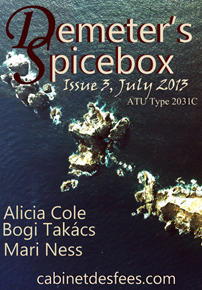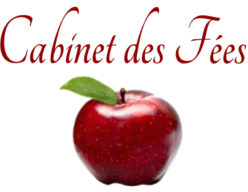 The Aarne-Thompson-Uther (ATU) folktale type 2031C, The Mouse who was to Marry the Sun, is a deceptively simple story, with a message of understanding where you belong in the world. That sense of belonging may be considered intrinsic to our experiences, but it may not always come easy, not when you’re in-between the boundaries of here and there, not when fostering and adoption comes into play. This folktale type perhaps speaks more to those who have families that are not biological, or who have been set adrift from their own homes. But that sense of being set adrift might still exist if one is within one’s culture, and within one’s own family. The sense of belonging is made complicated when our individual identities, desires and wants are considered. Sometimes, we may need to look a little closer to home. Or sometimes, we have to challenge not just the notions of others about what is good for us, but our own preconceptions. Looking for those stories that were right for this issue was an almost eerie mirroring of the message of this folktale. It was a bit like being an overly proud parent, looking for the right suitors for this issue, and, like that parent, I looked high and low, with various mishaps. Like that parent, I had to listen to the right advice, and to keep a discerning look-out for the right “suitors”.
The Aarne-Thompson-Uther (ATU) folktale type 2031C, The Mouse who was to Marry the Sun, is a deceptively simple story, with a message of understanding where you belong in the world. That sense of belonging may be considered intrinsic to our experiences, but it may not always come easy, not when you’re in-between the boundaries of here and there, not when fostering and adoption comes into play. This folktale type perhaps speaks more to those who have families that are not biological, or who have been set adrift from their own homes. But that sense of being set adrift might still exist if one is within one’s culture, and within one’s own family. The sense of belonging is made complicated when our individual identities, desires and wants are considered. Sometimes, we may need to look a little closer to home. Or sometimes, we have to challenge not just the notions of others about what is good for us, but our own preconceptions. Looking for those stories that were right for this issue was an almost eerie mirroring of the message of this folktale. It was a bit like being an overly proud parent, looking for the right suitors for this issue, and, like that parent, I looked high and low, with various mishaps. Like that parent, I had to listen to the right advice, and to keep a discerning look-out for the right “suitors”.
I chose the setting of an island because islands can very often be a metaphor of exile. Surrounded on all sides by water, there is a sense of being cut off from everything except for perhaps the elements, and yet, as can be seen in the cover graphic, the idea of islands being cut-off from the world is just that, an idea. Nature always tells us a different story, about how interconnected we all are. I was interested in the manner in which the island as a metaphor would inform the retelling of ATU type 2031C by the authors, and as always, a dialogue between the tales, and between the authors was desired. This journey has been even more challenging than the past, but it has also been a process of learning, evolving, shifting. Even if we are still young, a dialogue and a sense of community has evolved with this publication. I hope this continues to grow in the future. For all cross-cultural experiments should include growth, discussion, boundary-challenging, and learning.
Alicia Cole’s Flower of Flowers, Bird of Birds is our first offering, and is a story set in the Comoros Island off the coast of Africa. It is a lovely, poignant tale of a bird who turns into a boy. Alicia’s narrative speaks to us about a different kind of sense of belonging, one that is gendered, and made complex. Suffused with poetic language, Alicia’s story ends on a very satisfying note, with a choice that has been effectively foreshadowed from the beginning. Bogi Takács’ Mouse Choirs of the Old Mátra on the other hand, challenges our idea of islands, by setting it in a flatlands island in Hungary. Bogi’s wise and warm tale brings to life both the spicebox and Suh’s Jar of Tears in Joshua Gage’s compelling Salt. It is a lyrical narrative which refers back to the the Hungarian folktale “Who’s Best of the Best?”, and which bristles with a quiet intensity and humour. While it does not quite fit within the geographical zones suggested in our Submissions Guidelines, I decided that, like the guardian looking for the right suitor for his ward, perhaps I needed to see what it was the issue really wanted.
This issue is a bumper issue and contains three stories instead of the usual two (we won’t be repeating this unless there’s an exceptional case), another deviation from the script! Issue Three’s fictive offerings close with Mari Ness’s Stronger Than The Wind, a lyrical tale of exiles and isolation, of a girl who is not quite from the land, not quite from the sea. The most contemporary of all three tales, Mari’s powerful story is a fitting epilogue for this Issue, a story about stories, and what endures through time and circumstance. It creates a lovely segue into our print issue and for Volume Two, in which my prompts will take us closer to this day and age, albeit with some historical digressions!
We’ve also decided to highlight the interstitial nature of this project by inviting artists to submit works that are inspired by the stories, or paintings of theirs which they believe correspond to the stories. This was our publisher Erzebet Yellowboy’s excellent suggestion, and finding those works of art was not as challenging as you might think. There have been days in which we received an equal amount of arts submissions and fiction submissions. To honor those artists who have been communicating with us, we offer Something Old, Something New: A DS Artistic Experiment with art by Laila Borrie, Kirsty Greenwood, Stace Dumoski and Pictsy, all of whom are interstitial artists. My behind-the-scenes dialogues with all artists as well as the process of this artistic experiment has been invigorating and I hope we shall have more experiments of this nature in the future. With art, with music, with comics, and short movies.
![]()
Once again, I offer my warmest thanks to Erzebet Yellowboy, Demeter Spicebox’s publisher. Her patience, good sense and wisdom has been invaluable to the development of this issue, she has been my sounding board throughout, and with grace and tact has steered me through some rather dangerous waters. I would also like to thank all of the people who helped boost the signal for the calls for submissions for Demeter’s Spicebox. There were many who helped to spread the word (too many to list, and I thank everyone for their efforts), but especial thanks go to Julia Rios, Lisa Stock, Juanita Poareo, Steve Toase, Alex Dally MacFarlane, and Tori Truslow for helping to promote Demeter’s Spicebox.
I hope you will enjoy our offerings in this third issue, and I look forward to reading more offerings by those of you who would like to share in this narrative, and in this world that we’re building!
Warm Wishes,
Nin Harris
Editor, Demeter’s Spicebox
Issue Three, Volume One, July 2013
